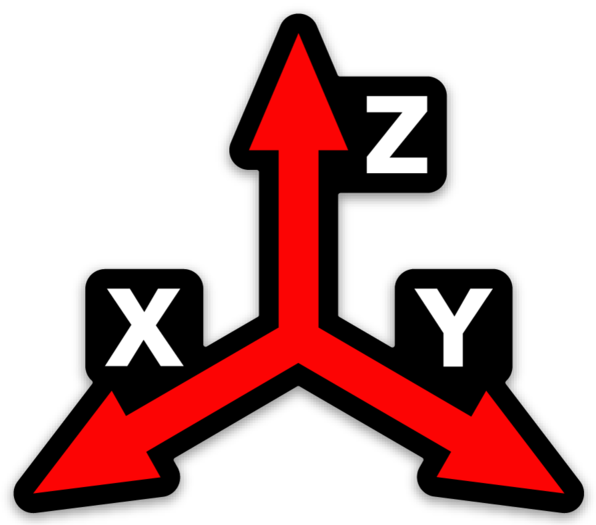Timing in a Golf Swing
Kinematic Maximums
There's always been lots of talk about timing in the golf swing, but hard data on what that means—and what is actually happening—has been missing from golf instruction. That's not true anymore. For the past 10 years at Jacobs 3D, we can pinpoint various kinematic maximums—the instant in the swing when a certain kind of movement reaches its peak velocity. It's a very cool collection of metrics, and what it reveals says a lot about the level of a player.
Take a look at this graphic below (left), which represents a driver swing for a tournament-winning PGA Tour player. The light blue spines represent the location of the shaft in space throughout the downswing, and the dark blue line is the path the hands are traveling. The various asterisk symbols represent the instant when different elements of the club’s behavior experience their peak velocity.
Kinematic maximums include: linear velocity of the hands and club head, angular velocity in all three dimensions and the kinetic energy of the club’s mass center.
This image represents the time in this player’s swing when the gamma rotation of the club and it’s mass center’s kinetic energy reached its peak.
What does this tell us about "timing?" First, look at where the red asterisk—the moment when the grip reaches peak velocity—happens in the downswing. I suspect that's much earlier than you expected. Good players are already slowing the handle down and transferring energy out well before impact. The clubhead for this player reached its peak velocity at impact, which as you can imagine, is ideal.
The rotational measures are the alpha, beta and gamma velocities—the maximum twisting in those particular directions of rotation. Alpha velocity maxes out near when the club is parallel to the ground, while beta velocity max happens when the club is near the trail leg. Even gamma velocity—the twisting of the shaft around itself like a shish kebab—peaks before impact, right as the kinetic energy of the swing maxes out. That's a fascinating element, because it really does confirm the feel many good players have—that they're trying to ‘hold off’ the rotation of the shaft around itself, into impact.
The next question you're probably asking yourself is how this graphic compares to one from, say, a 20-handicapper—or a skilled player who doesn't hit the ball as far as this person does. Those are great questions, and we'll share them in the next news reel.
